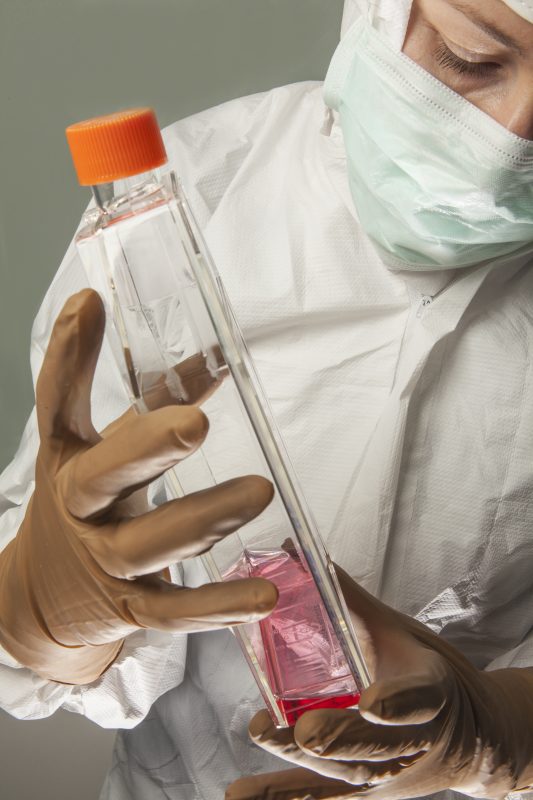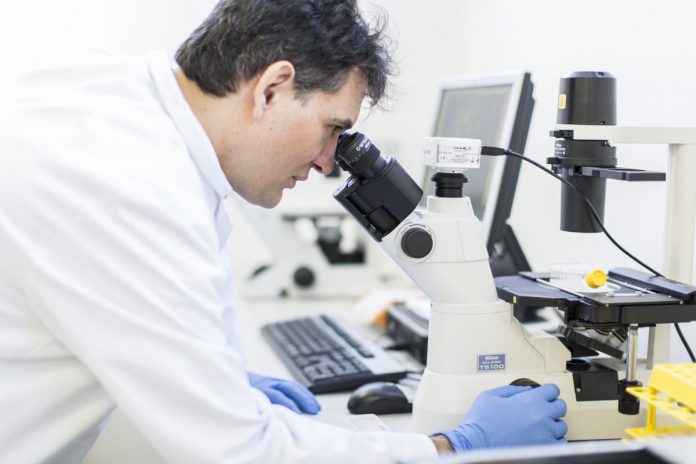Antonino Tramonte, Managing Director, Swiss Institute for Regenerative Medicine outlines how regenerative medicine can help patients
Regenerative medicine is the medical revolution that is increasingly challenging the way we approach and fight diseases. In southern Switzerland, at the Swiss Institute for Regenerative Medicine, hospitals, research institutions, companies and universities are joining forces to bring innovation from bench to bedside.
The medical revolution
Though great progress has been made in medicine, current treatments are increasingly unable to keep pace with patients’ need, especially given our ageing population. In fact, there are few effective ways to treat the root causes of many common diseases, injuries, and congenital conditions. In many cases, clinicians can only manage patients’ symptoms using medications or devices. This is especially true, for example, in the case of acute myocardial infarction and other heart diseases. If most tissues and organs in the human body have in fact a regular turnover of cells (meaning that entire tissues or organs are replaced over a period of weeks or years depending on the type of cells), heart cells are an exception. Adult cardiac cells experience no (or extremely slow) replacement over time. This means that any injury of the heart has serious consequences for the patients.
Regenerative medicine is a game-changing area of medicine because it intervenes exactly where traditional medicine fails, by regenerating damaged tissues or organs and therefore restore the normal functions of the body. This is made possible through the development and the application of new therapies based on the use of stem cells, i.e. undifferentiated progenitors cells that have the ability to evolve – through a process called “differentiation” – into diverse types of specialised cells.
By studying the properties of each kind of stem cell, scientists are today able to regenerate entire organs or at least part of them, and therefore cure damages that were previously considered irreversible. Heart disease is just one example of a condition that is going to be completely revolutionised by regenerative medicine. Other potential applications are found in Parkinson’s disease, cerebral palsy, degenerative retinal diseases, pulmonary disease, spinal cord injury, arthritis, and many more.

Only a few decades ago, the concept of regenerating parts of the human body was firmly restricted to the realm of science fiction; however, in a very short space of time, it has become a tangible scientific and therapeutic reality all over the world. In fact, even though many people perceive regenerative medicine as a matter of the future, it is already a tangible reality. A significant quantity of regenerative medicine products are in fact already commercially and clinically successful. In addition to over 60,000 stem cell transplants that are annually performed worldwide for the treatment of oncology and blood disorders, in 2012 over 160,000 patients were treated using new, experimental regenerative medicine drugs. At the same time, more products are being approved and new data are becoming available from mid and late-stage regenerative medicine clinical trials. Going forward, the industry expects the approvals to multiply annually.
Obviously, research in regenerative medicine requires significant effort and investments. Treatment, before becoming a reality, may take up to 10 or 15 years of development and testing. This has not stopped some particularly forward-thinking countries in investing in what is often called “the medicine of the future”, also because research in this field is capable of producing an extremely important scientific and economic advancement. An example of forward-thinking in this regard is in the state of California which, following the so-called “Proposition 71” – the state law approved by referendum in 2004 – has allocated $3bn to regenerative medicine. Thanks to this major investment, California can now rely on 2,600 biomedical companies, 87 university and private research institutes generating an annual revenue of $32.3bn, 15 of which are reinvested annually for research.
Making the dream true: The Swiss Institute for Regenerative Medicine
In the last decade, the growth of the biotech sector in the southern and Italian-speaking Ticino Canton has become increasingly important for the economy of the region and for the surrounding scientific environment. It is here, just 15 minutes far from the Italian city of Como, less than an hour from Milan, in a region known for its ability to blend Italian lifestyle and culture with Swiss precision, top-level services and political stability, that the first stem cell transplant of the country has been performed in 2004, on a patient with acute myocardial infarction. The intervention was carried out by a cardiology team led by Prof. Tiziano Moccetti at Cardiocentro Ticino, a Lugano based, cutting edge heart clinic, known to be one of the most important cardiac centres in Switzerland. This pioneering and encouraging experience eventually led the clinic to investigate further on the matter by building the first authorised “cell factory” of the country, which is a special facility to safely produce experimental drugs based on stem cells. Starting in 2005, these experiences led to the creation of a growing biomedical cluster of companies, research institutes and other clinics interested in the exploration and application of regenerative medicine in various medical fields. In 2013, this group finally created the Swiss Institute for Regenerative Medicine (SIRM), a new research centre entirely committed to exploring the full potential of regenerative medicine. The Institute, supported by the Cardiocentro Ticino Foundation, and funded by the Foundation for Cardiological and Research Education (FCRE), has a bold mission: To unleash the enormous potential of human body regeneration and thereby support the development of next-generation therapies and cures that will shape the medicine of the future.
This is not a simple task, explains Antonino Tramonte, SIRM Managing Director: “To effectively become a real solution for patients, the new therapies require several years of research and development. At SIRM we strive to accelerate this process by combining and integrating competences of several different but complementary institutions that are actually part of the same ecosystem: Clinicians, researchers and biotech companies.
“This is why SIRM laboratories, based in Taverne, currently host 5 partner institutions: Cardiocentro Ticino, Neurocenter of Southern Switzerland, University of Applied Sciences and Arts of Southern Switzerland (SUPSI) and two innovative biotech companies: Swiss Stem Cell Bank and Hyperstem.”
“This is indeed a successful example of cooperation,” explains Claudio Massa, President of the FCRE Foundation. “In just 3 years of activity, we completely saturated the spaces in our current headquarter and we deal quite on a daily basis with new requests from new companies and new research institutes that would like to join us in our research for regenerative medicine. We’re now talking with new partners and with Lugano municipality to buy together a new building, big enough to support our growth in the medtech field. We’re amazed by the SIRM project so far, it truly exceeded our most optimistic prevision”.
“Our dream”, concludes Prof. Tiziano Moccetti, scientific director of Cardiocentro Ticino and of SIRM, “is to create with our joint work a real treatment opportunity for patients. Everything starts from the patient whose needs are the main goals for the clinician. Doctors’ research for solutions creates research projects and consequently opportunities for the biomedical industry. Only when all these stakeholders communicate and cooperate patients’ needs are finally met. This is the real meaning of the translational research we do at SIRM. Literally: From bench to bedside, that is our philosophy and the path we want to follow for the medicine of the future.”
Antonino Tramonte
Managing Director
Swiss Institute for Regenerative Medicine
+4191 805 39 78
Please note: this is a commercial profile











